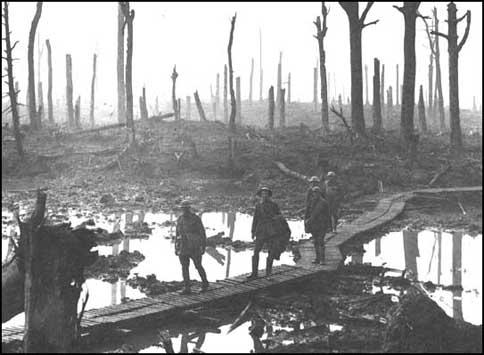Duckboards
Most of the land on the Western Front was only a couple of feet above sea level. As soon as soldiers began to dig trenches they would invariably find water just below the surface. Constantly standing in water caused trench foot and other ailments. In an attempt to alleviate the problem, wooden planking, known as duckboards, were placed at the bottom of trenches and across other areas of muddy or waterlogged ground.

Primary Sources
(1) London Gazette (May, 1917)
From 26 April to 6 May 1917 flying over France, Captain Ball took part in 26 combats in the course of which he destroyed 11 hostile aircraft, brought down two out of control and forced several others to land. Flying alone, on one occasion he fought six hostile machines, twice he fought five and once four. When leading two other British planes he attacked an enemy formation of eight - on each of these occasions he brought down at least one enemy plane, and several times his plane was badly damaged. On returning with a damaged plane he had always to be restrained from immediately going out in another.
